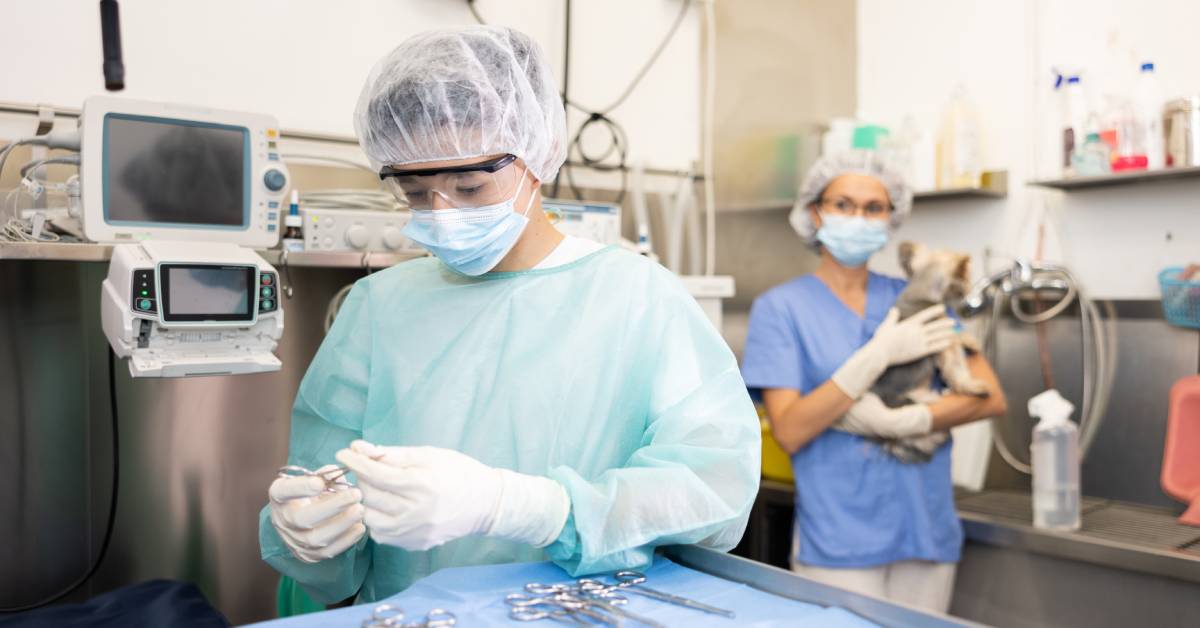Protective personal equipment (PPE) safeguards veterinary technicians and the animals they work with. Proper PPE and following best practices help prevent the spread of infections, improve hygiene, and ensure a safe working environment. Today, Gamma Compliance Solutions will outline four important PPE practices that every vet office should follow.
Use the Proper PPE
It’s important to assess the risks associated with each veterinary task to determine the appropriate PPE. Common PPE in vet offices includes gloves, masks, gowns, and eye protection. These items protect against various hazards, including chemicals, zoonotic diseases, and physical injuries.
Using the right PPE protects the wearer and helps maintain a sterile environment. For instance, wearing gloves during examinations and procedures reduces the risk of transmitting pathogens between animals. Masks and eye protection are vital during surgeries to prevent exposure to bodily fluids.
Regularly updating and maintaining an inventory of PPE ensures that staff always have access to the necessary equipment. This proactive approach helps avoid situations where employees lack the proper PPE for a task.
Train Employees in PPE Use and Handling
Training employees on correct PPE use and handling is another key practice. Proper training ensures that your staff understands the importance of PPE and how to use it effectively. Training should cover topics like when to wear PPE and the limitations of each type of equipment.
Regular training sessions help reinforce the importance of PPE and keep staff updated on best practices. Follow OSHA veterinary safety manual guidelines during your routine training to provide up-to-date information. Hands-on training allows employees to practice using PPE in a controlled environment, reducing the likelihood of mistakes in real-life situations.
Follow PPE Removal and Disposal Guidelines
Proper removal and disposal of PPE is essential to prevent contamination and maintain a safe and hygienic environment for staff and animals. Incorrectly removing PPE can transfer contaminants to the wearer or the environment. Following established guidelines for PPE removal minimizes these risks.
Proper disposal follows PPE removal. Veterinary technicians should place single-use PPE in designated disposal containers to prevent cross-contamination. Veterinary offices should have clear protocols for the disposal of different types of PPE, such as biohazard bins for contaminated items.
Maintain Veterinary PPE
Keeping PPE in good condition is essential for its effectiveness. Regular inspections help identify any damage or wear that might compromise protection. For example, checking lab coats for tears or ensuring that masks fit properly can prevent potential hazards.
Proper PPE storage also helps maintain its integrity. Always store PPE in clean, dry areas away from direct sunlight or chemicals that might degrade the materials. Establishing a routine maintenance schedule helps ensure that PPE remains in optimal condition.
You’ll also want to replace PPE regularly according to manufacturer guidelines. Over time, even well-maintained PPE can lose its effectiveness. Keeping track of usage and replacing items promotes continuous protection.
Implementing these four important PPE practices enhances safety and efficiency in veterinary offices. By adhering to these practices, vet professionals can protect their health and the animals they care for.
Continuous adherence to PPE practices is vital for creating a safe work environment. For more information and training on PPE practices, visit Gamma Compliance Solutions, where you can find veterinary OSHA training programs for your business.

